
The UN Sustainable development goals (SDGs) highlight how all aspects of sustainability are connected. From climate change to biodiversity, gender and wider equality, clean and affordable energy. This echoes BREEAM’s holistic approach to environmental assessment.
The SDGs were first written into a national policy in the Wellbeing of Future Generations Act Wales (2015). The UK is committed to the delivery of the SDGS’s by embedding them in planned activity of each Government department. With limited resources and multiple challenges, we need solutions which multi-solve and a way of communicating how this happens. The SDG icons are increasingly used as a way to do exactly that.
Explore our page below to discover how the BREEAM suite of schemes align with the targets of each of the Sustainable Development Goals.

Click on any of the plus signs near the SDG logos to discover what targets and indicators the BREEAM suite of schemes align to.
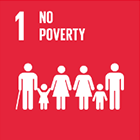
Goal 1: End poverty in all its forms everywhere
Reference target: Target 1.4
By 2030, ensure that all men and women, in particular the poor and the vulnerable, have equal rights to economic resources, as well as access to basic services, ownership and control over land and other forms of property, inheritance, natural resources, appropriate new technology, and financial services, including microfinance.
Reference target: Target 1.5
By 2030, build the resilience of the poor and those in vulnerable situations and reduce their exposure and vulnerability to climate-related extreme events and other economic, social and environmental shocks and disasters.
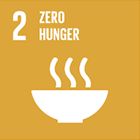
Goal 2: End hunger, achieve food security and improved nutrition and promote sustainable agriculture
Reference target: Target 2.4
By 2030, ensure sustainable food production systems and implement resilient agricultural practices that increase productivity and production, that help maintain ecosystems, that strengthen capacity for adaptation to climate change, extreme weather, drought, flooding and other disasters and that progressively improve land and soil quality.
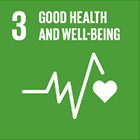
Goal 3: Ensure healthy lives and promote well-being for all at all ages
Reference target: Target 3.4
By 2030, reduce by one third premature mortality from non-communicable diseases through prevention and treatment and promote mental health and well-being.
Reference target: Target 3.6
By 2020, halve the number of global deaths and injuries from road traffic accidents.
Reference target: Target 3.9
By 2030, substantially reduce the number of deaths and illnesses from hazardous chemicals and air, water and soil pollution and contamination.
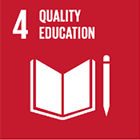
Goal 4: Ensure inclusive and quality education for all and promote lifelong learning
Reference target: Target 4.a
Build and upgrade education facilities that are child, disability and gender sensitive and provide safe, non-violent, inclusive and effective learning environments for all.
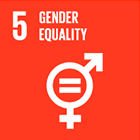
Goal 5: Achieve gender equality and empower all women and girls
The Indicators for this goal are not influenced by the criteria from this scheme.
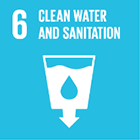
Goal 6: Ensure availability and sustainable management of water and sanitation for all
Reference target: Target 6.1
By 2030, achieve universal and equitable access to safe and affordable drinking water for all.
Reference target: Target 6.2
By 2030, achieve access to adequate and equitable sanitation and hygiene for all and end open defecation, paying special attention to the needs of women and girls and those in vulnerable situations.
Reference target: Target 6.3
By 2030, achieve universal and equitable access to safe and affordable drinking water for all.
Reference target: Target 6.a
By 2030, expand international cooperation and capacity-building support to developing countries in water- and sanitation-related activities and programmes, including water harvesting, desalination, water efficiency, wastewater treatment, recycling and reuse technologies.
Reference target: Target 6.b
Support and strengthen the participation of local communities in improving water and sanitation management.
Reference target: Target 6.4
By 2030, substantially increase water-use efficiency across all sectors and ensure sustainable withdrawals and supply of freshwater to address water scarcity and substantially reduce the number of people suffering from water scarcity.
Reference target: Target 6.5
By 2030, implement integrated water resources management at all levels, including through transboundary cooperation as appropriate.
Reference target: Target 6.6
By 2020, protect and restore water-related ecosystems, including mountains, forests, wetlands, rivers, aquifers and lakes.
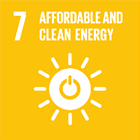
Goal 7: Ensure access to affordable, reliable, sustainable and modern energy for all
Reference target: Target 7.1
By 2030, ensure universal access to affordable, reliable and modern energy services.
Reference target: Target 7.3
By 2030, double the global rate of improvement in energy efficiency.
Reference target: Target 7.a
By 2030, enhance international cooperation to facilitate access to clean energy research and technology, including renewable energy, energy efficiency and advanced and cleaner fossil-fuel technology, and promote investment in energy infrastructure and clean energy technology.
Reference target: Target 7.b
By 2030, expand infrastructure and upgrade technology for supplying modern and sustainable energy services for all in developing countries, in particular least developed countries, small island developing States, and land-locked developing countries, in accordance with their respective programmes of support.
Reference target: Target 7.2
By 2030, increase substantially the share of renewable energy in the global energy mix.
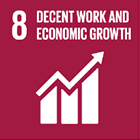
Goal 8: Promote sustained, inclusive and sustainable economic growth, full and productive employment and decent work for all
Reference target: Target 8.3
Promote development-oriented policies that support productive activities, decent job creation, entrepreneurship, creativity and innovation, and encourage the formalization and growth of micro-, small- and medium-sized enterprises, including through access to financial services.
Reference target: Target 8.4
Improve progressively, through 2030, global resource efficiency in consumption and production and endeavour to decouple economic growth from environmental degradation, in accordance with the 10-year framework of programmes on sustainable consumption and production, with developed countries taking the lead.
Reference target: Target 8.7
Take immediate and effective measures to eradicate forced labour, end modern slavery and human trafficking and secure the prohibition and elimination of the worst forms of child labour, including recruitment and use of child soldiers, and by 2025 end child labour in all its forms.
Reference target: Target 8.8
Protect labour rights and promote safe and secure working environments for all workers, including migrant workers, in particular women migrants, and those in precarious employment.
Reference target: Target 8.10
Strengthen the capacity of domestic financial institutions to encourage and expand access to banking, insurance and financial services for all.
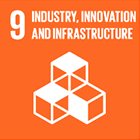
Goal 9: Build resilient infrastructure, promote inclusive and sustainable industrialization and foster innovation
Reference target: Target 9.1
Develop quality, reliable, sustainable and resilient infrastructure, including regional and transborder infrastructure, to support economic development and human well-being, with a focus on affordable and equitable access for all.
Reference target: Target 9.a
Facilitate sustainable and resilient infrastructure development in developing countries through enhanced financial, technological and technical support to African countries, least developed countries, landlocked developing countries and small island developing States.
Reference target: Target 9.4
By 2030, upgrade infrastructure and retrofit industries to make them sustainable, with increased resource-use efficiency and greater adoption of clean and environmentally sound technologies and industrial processes, with all countries taking action in accordance with their respective capabilities.
Reference target: Target 9.5
Enhance scientific research, upgrade the technological capabilities of industrial sectors in all countries, in particular developing countries, including, by 2030, encouraging innovation and substantially increasing the number of research and development workers per 1 million people and public and private research and development spending.
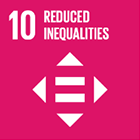
Goal 10: Reduce inequality within and among countries
The Indicators for this goal are not influenced by the criteria from this scheme.
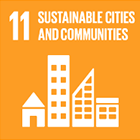
Goal 11: Make cities and human settlements inclusive, safe, resilient and sustainable
Reference target: Target 11.1
By 2030, ensure access for all to adequate, safe and affordable housing and basic services and upgrade slums.
Reference target: Target 11.3
By 2030, enhance inclusive and sustainable urbanization and capacity for participatory, integrated and sustainable human settlement planning and management in all countries.
Reference target: Target 11.5
By 2030, significantly reduce the number of deaths and the number of people affected and substantially decrease the direct economic losses relative to global gross domestic product caused by disasters, including water-related disasters, with a focus on protecting the poor and people in vulnerable situations.
Reference target: Target 11.b
By 2020, substantially increase the number of cities and human settlements adopting and implementing integrated policies and plans towards inclusion, resource efficiency, mitigation and adaptation to climate change, resilience to disasters, and develop and implement, in line with the Sendai Framework for Disaster Risk Reduction 2015-2030, holistic disaster risk management at all levels.
Reference target: Target 11.6
By 2030, reduce the adverse per capita environmental impact of cities, including by paying special attention to air quality and municipal and other waste management.
Reference target: Target 11.7
By 2030, provide universal access to safe, inclusive and accessible, green and public spaces, in particular for women and children, older persons and persons with disabilities.
Reference target: Target 11.a
Support positive economic, social and environmental links between urban, peri-urban and rural areas by strengthening national and regional development planning.
Reference target: Target 11.c
Support least developed countries, including through financial and technical assistance, in building sustainable and resilient buildings utilizing local materials.
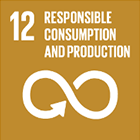
Goal 12: Ensure sustainable consumption and production patterns
Reference target: Target 12.1
Implement the 10-Year Framework of Programmes on Sustainable Consumption and Production Patterns, all countries taking action, with developed countries taking the lead, taking into account the development and capabilities of developing countries.
Reference target: Target 12.2
By 2030, achieve the sustainable management and efficient use of natural resources.
Reference target: Target 12.4
By 2020, achieve the environmentally sound management of chemicals and all wastes throughout their life cycle, in accordance with agreed international frameworks, and significantly reduce their release to air, water and soil in order to minimize their adverse impacts on human health and the environment.
Reference target: Target 12.5
By 2030, substantially reduce waste generation through prevention, reduction, recycling and reuse.
Reference target: Target 12.6
Encourage companies, especially large and transnational companies, to adopt sustainable practices and to integrate sustainability information into their reporting cycle.
Reference target: Target 12.7
Promote public procurement practices that are sustainable, in accordance with national policies and priorities.
Reference target: Target 12.a
Support developing countries to strengthen their scientific and technological capacity to move towards more sustainable patterns of consumption and production.
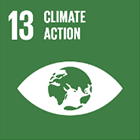
Goal 13: Take urgent action to combat climate change and its impacts
Reference target: Target 13.1
Strengthen resilience and adaptive capacity to climate-related hazards and natural disasters in all countries.
Reference target: Target 13.2
Integrate climate change measures into national policies, strategies and planning.
Reference target: Target 13.3
Improve education, awareness-raising and human and institutional capacity on climate change mitigation, adaptation, impact reduction and early warning.
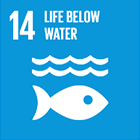
Goal 14: Conserve and sustainably use the oceans, seas and marine resources for sustainable development
Reference target: Target 14.1
By 2025, prevent and significantly reduce marine pollution of all kinds, in particular from land-based activities, including marine debris and nutrient pollution.
Reference target: Target 14.2
By 2020, sustainably manage and protect marine and coastal ecosystems to avoid significant adverse impacts, including by strengthening their resilience, and take action for their restoration in order to achieve healthy and productive oceans.
Reference target: Target 14.3
Minimize and address the impacts of ocean acidification, including through enhanced scientific cooperation at all levels.
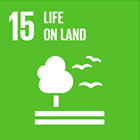
Goal 15: Protect, restore and promote sustainable use of terrestrial ecosystems, sustainably manage forests, combat desertification, and halt and reverse land degradation and halt biodiversity loss
Reference target: Target 15.1
By 2020, ensure the conservation, restoration and sustainable use of terrestrial and inland freshwater ecosystems and their services, in particular forests, wetlands, mountains and drylands, in line with obligations under international agreements.
Reference target: Target 15.3
By 2030, combat desertification, restore degraded land and soil, including land affected by desertification, drought and floods, and strive to achieve a land degradation-neutral world.
Reference target: Target 15.5
Take urgent and significant action to reduce the degradation of natural habitats, halt the loss of biodiversity and, by 2020, protect and prevent the extinction of threatened species.
Reference target: Target 15.9
By 2020, integrate ecosystem and biodiversity values into national and local planning, development processes, poverty reduction strategies and accounts.
Reference target: Target 15.2
By 2020, promote the implementation of sustainable management of all types of forests, halt deforestation, restore degraded forests and substantially increase afforestation and reforestation globally.
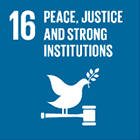
Goal 16: Promote peaceful and inclusive societies for sustainable development, provide access to justice for all and build effective, accountable and inclusive institutions at all levels
Reference target: Target 16.2
End abuse, exploitation, trafficking and all forms of violence against and torture of children.
Reference target: Target 16.5
Substantially reduce corruption and bribery in all their forms.
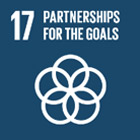
Goal 17: Strengthen the means of implementation and revitalise the global partnership for sustainable development
The Indicators for this goal are not influenced by the criteria from this scheme.
Get in touch
